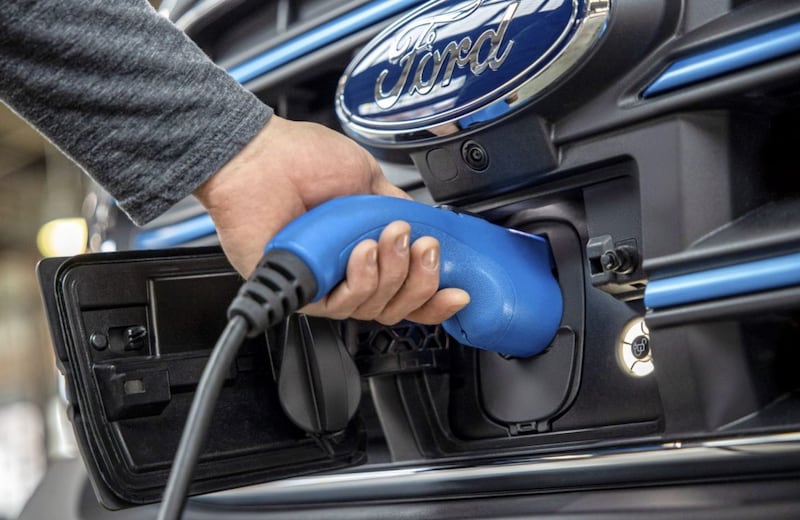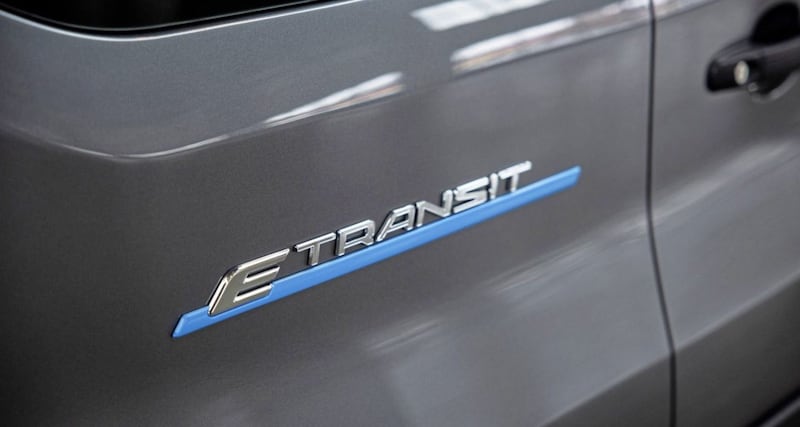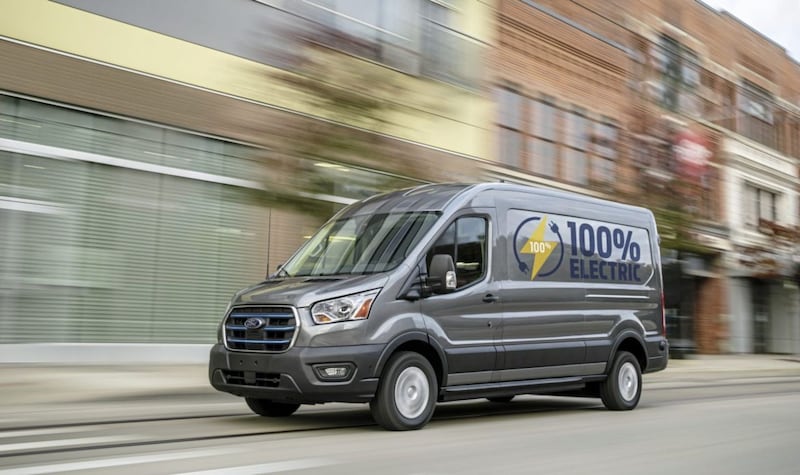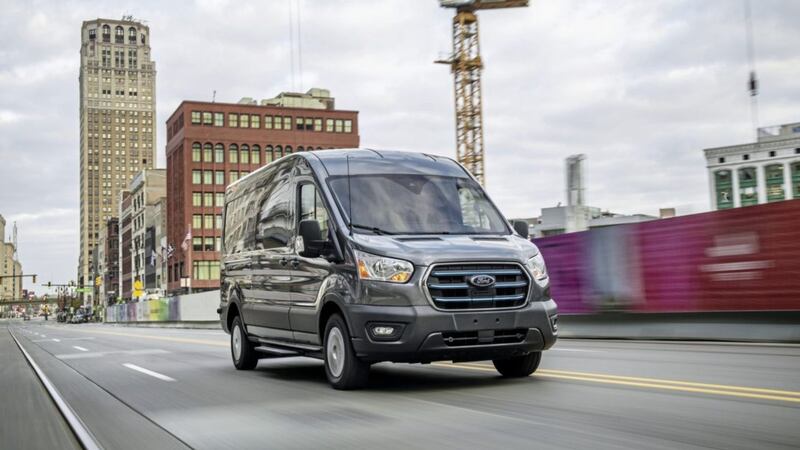FORD is fitting an electric powertrain to the world's best-selling van to create the E-Transit.
Thanks to a 67kWh battery, the E-Transit should return up to 217 miles between charges, while powering up via a 115kW DC fast-charger will result in a 15 to 80 per cent charge taking just 34 minutes.
One imagines that van operators will have to fit a bank of these powerful chargers at their depots to maximise the potential of both the E-Transit itself and its fast-charging capability.

Plug in via a conventional wallbox and a full charge will take 8.2 hours, according to Ford.
It's also available with an optional onboard power system, which transforms the E-Transit into a mobile power source.
Capable of delivering up to 2.3kW, the van could then be used to power tools or other electrical equipment while on the go.
The powertrain also produces 269bhp and 317lb ft of torque, which means the E-Transit incorporates the most powerful motor of any fully electric cargo van sold in Europe.
However, Ford hasn't forgotten to ensure that the E-Transit retains the same level of usability as the regular van.

As such, the batteries have been placed under the vehicle's body to maximise practicality. It means that there are 15.1 cubic meters of cargo space - identical to a rear-wheel-drive diesel-powered Transit.
It also brings a payload capacity of 1,616kg for the panel van, and up to 1,967kg for the chassis cab models.
In Europe, there will be a choice of up to 25 individual configurations with van, double-cab and chassis cab styles available as well as multiple length and roof height options.
Customer fleet trials for the E-Transit are due to start in key European markets next year ahead of its full arrival at the start of 2022.









